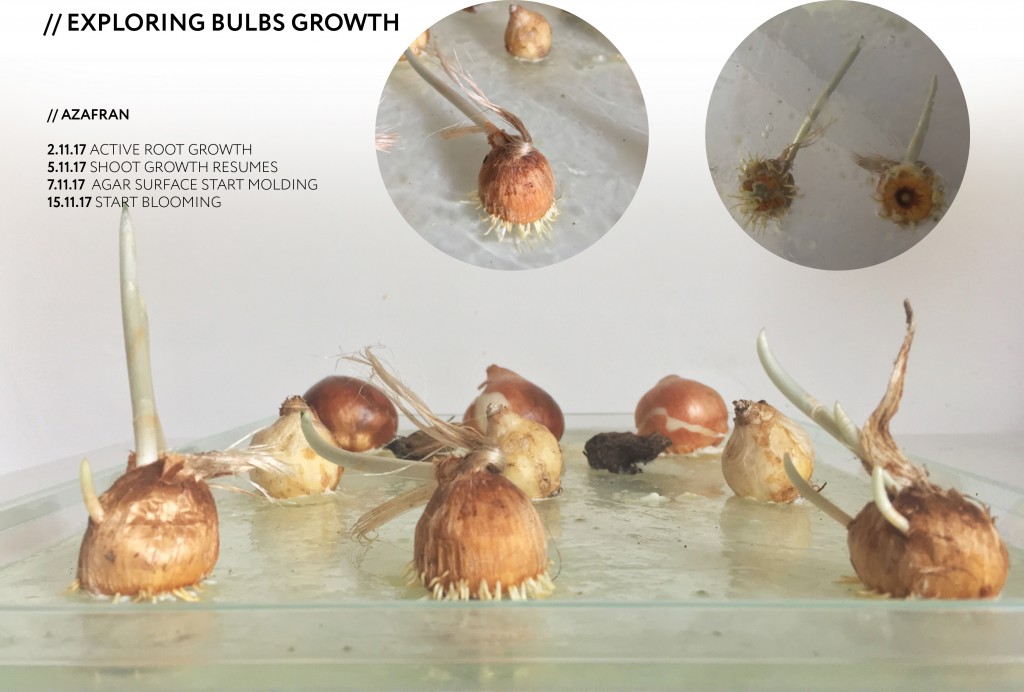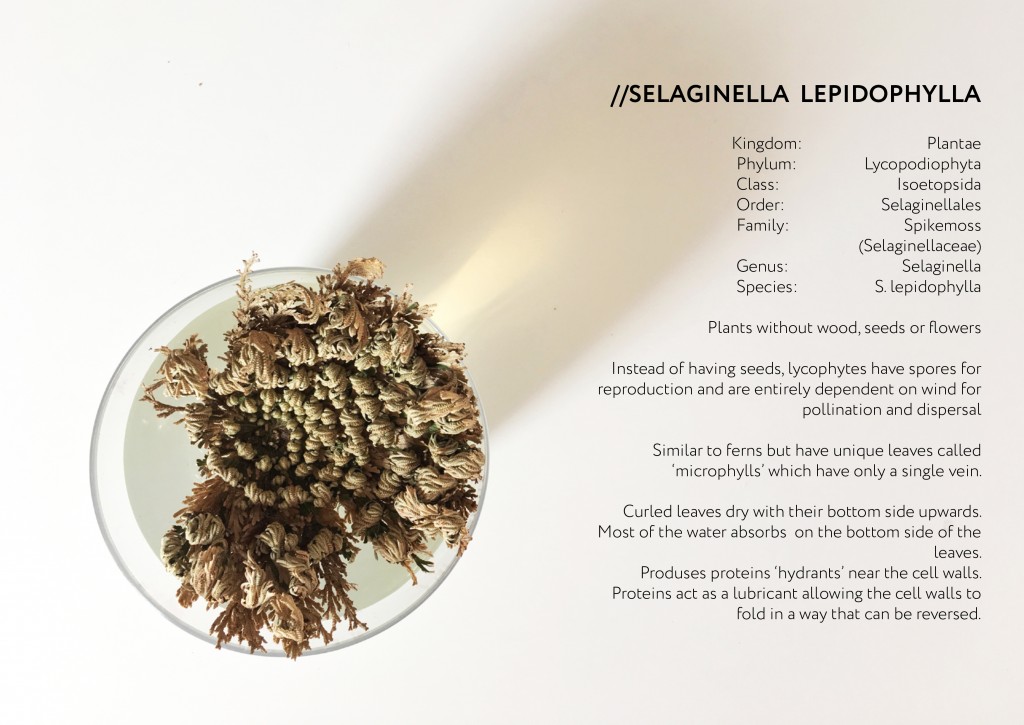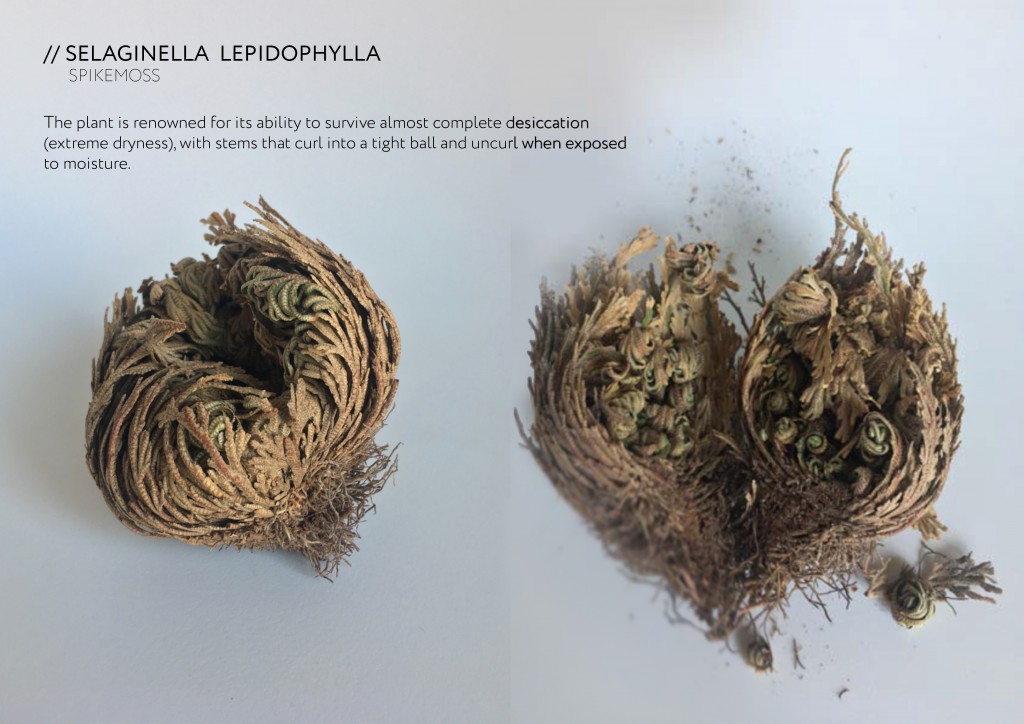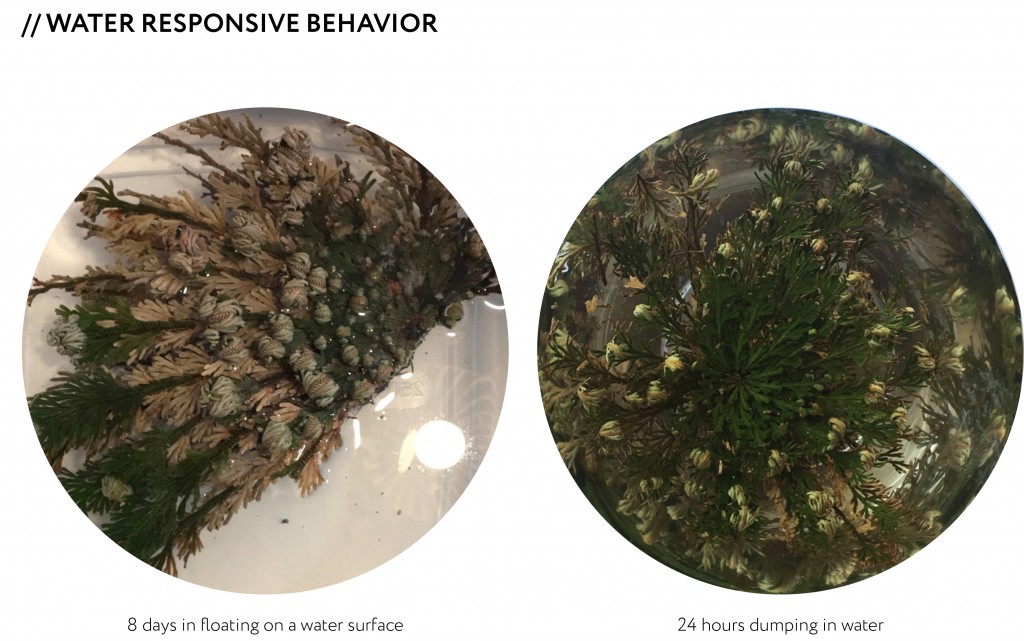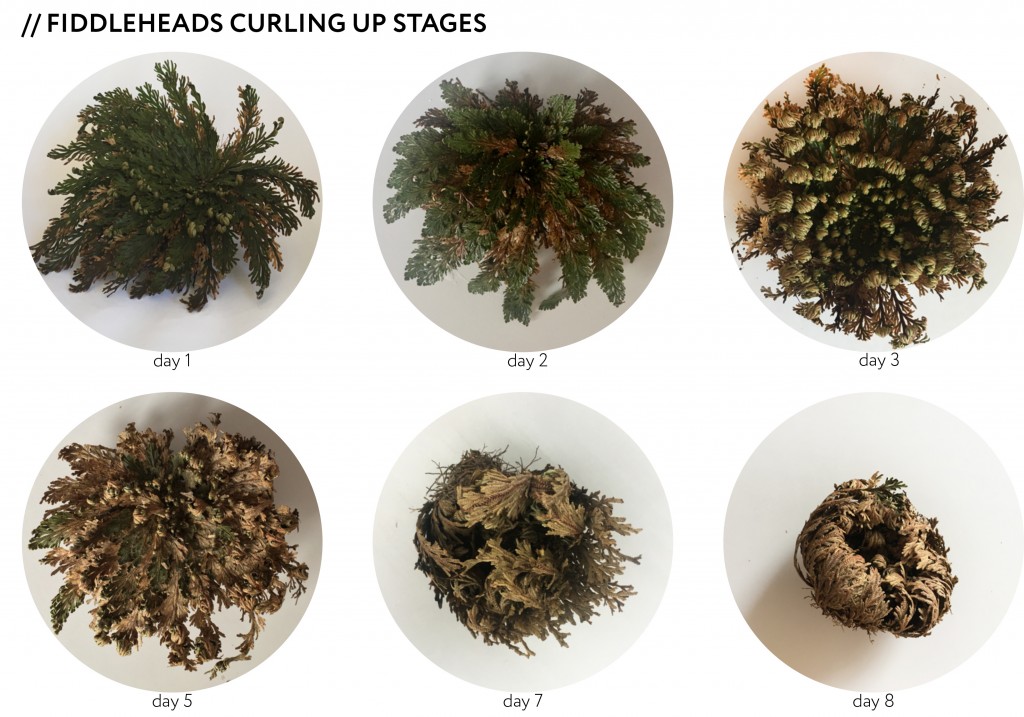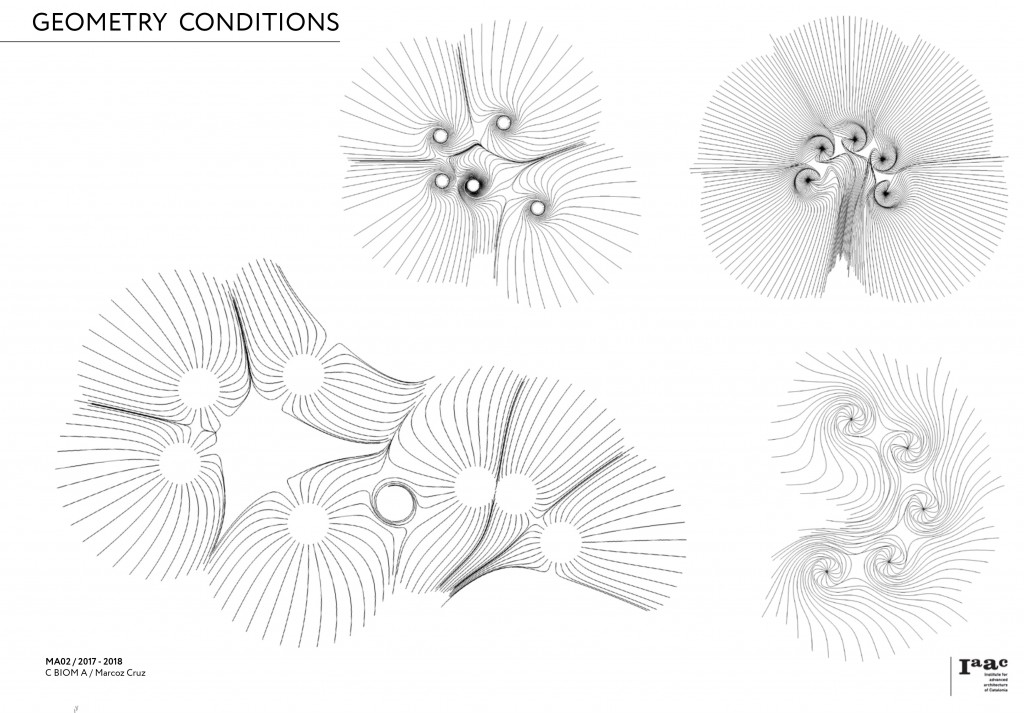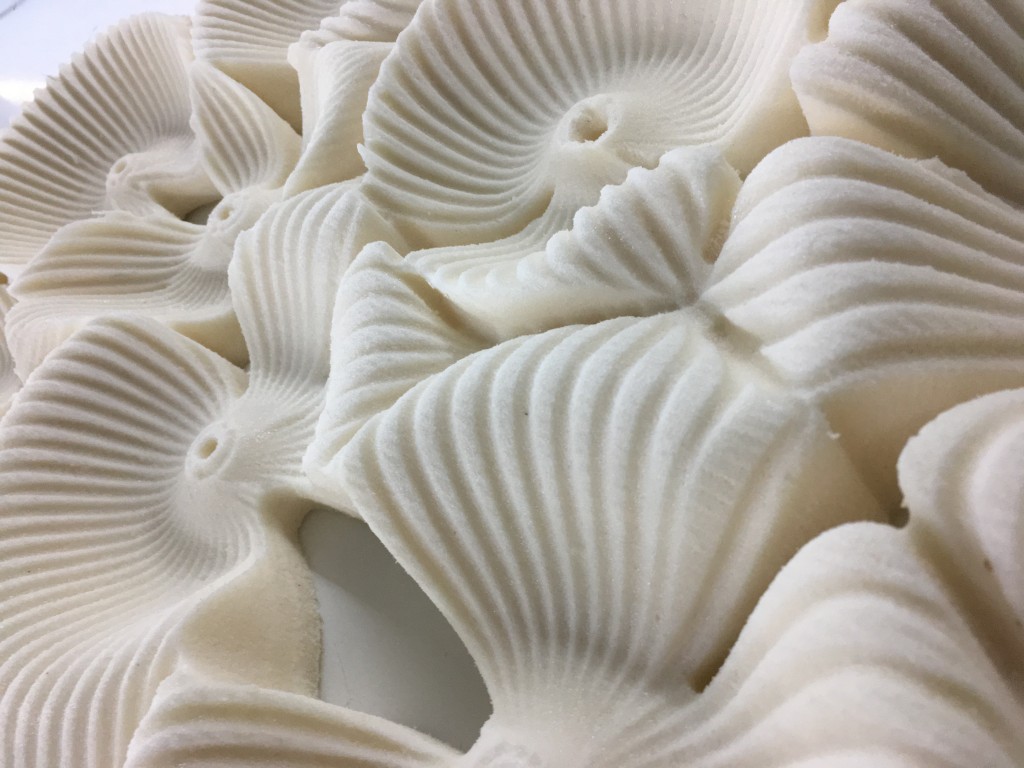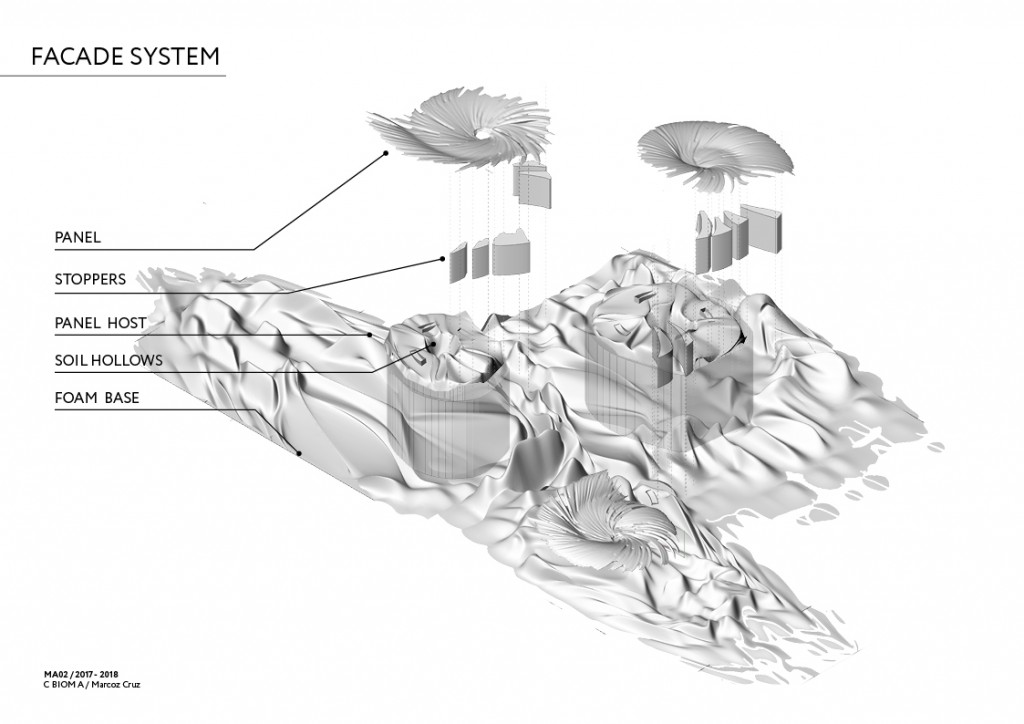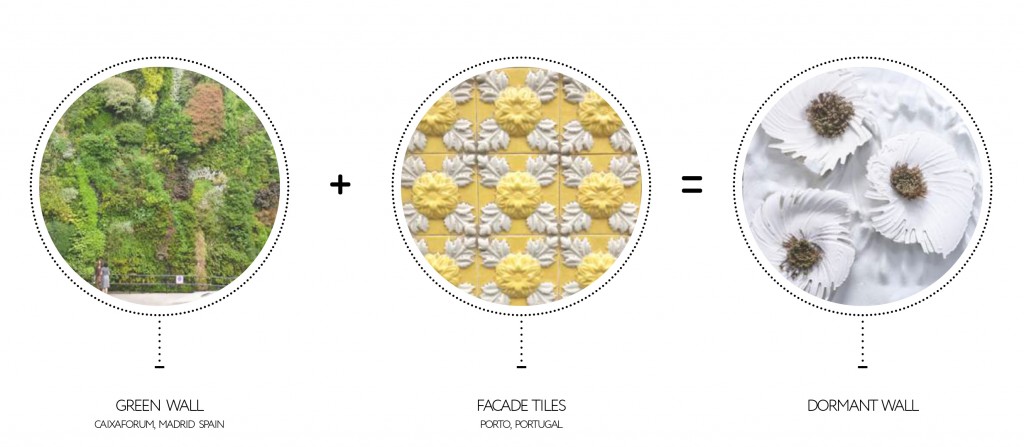
CONCEPTUAL DEVELOPMENT
THE URBAN WORLD IS INEXTRICABLY LINKED WITH THE NATURAL AS IF THE BIOMIMICRY OF ARCHITECTURAL STRUCTURES OR THE LITERAL INTRODUCTION OF BIO ORIGINALISM WHICH IS SO-CALLED «GREEN WALLS». UNDERSTANDING HOW MUCH RESOURCES ARE SPENT TO MAINTAIN IT, CAN WE ACTUALLY CALL THEM GREEN?
THIS PROJECT IS ABOUT RETHINKING THIS QUESTIONABLY EFFECTIVE METHOD OF ARTIFICIAL CREATION OF A VERTICAL ENVIRONMENT FOR PLANTS TO LIVE. HOW CAN WE DESIGN A FACADE SYSTEM FOR A DESERT PLANT, WHICH BY EVOLUTION HAS ADAPTED TO THE AGGRESSIVE ENVIRONMENTAL CONDITIONS?
THE HYDROTROPIC REACTION OF SELAGINELLA LEPIDOPHYLLA IS THE PHENOMENON THIS RESEARCH IS BASED ON. THE PROJECT AIMS TO RETHINK A CURRENT FACADE DESIGN IN A NEW PARADIGM. TO EXPLORE NEW PROSPECTS OF RESPONSIVE ARCHITECTURE APPROACH BASED ON A COMBINATION OF NATURAL BEHAVIOR AND COMPUTATIONAL MORPHOGENESIS. AS WELL AS SELAGINELLA LEPIDOPHYLLA GOES INTO A DORMANT MODE DURING DROUGHT, THE SAME WAY THE FACADE OF THE BUILDING SWITCHES TO THE ENERGY CONSERVATION MODE ACCORDING TO THE EXPOSED PARAMETERS UNDER CERTAIN ENVIRONMENTAL CONDITIONS
This project is about recursive systems.
DORMANCY
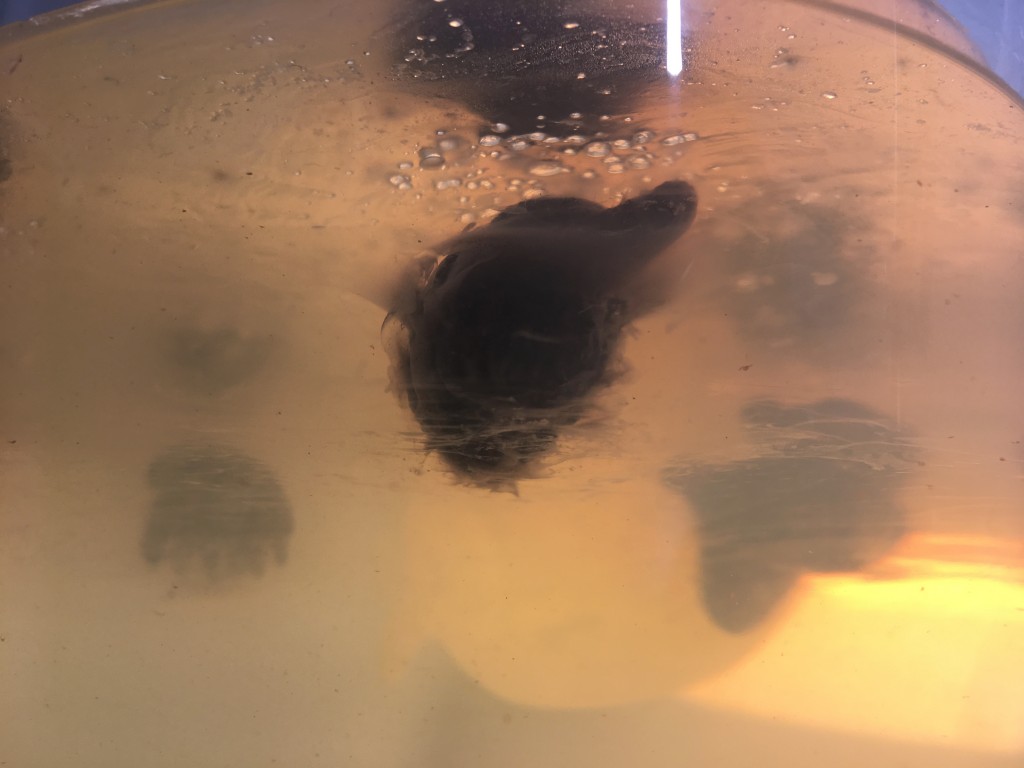
The period in an organism’s life cycle when growth, development, and (in animals) physical activity are temporarily stopped. This minimizes metabolic activity and therefore helps an organism to conserve energy.
Dormancy tends to be closely associated with environmental conditions. Organisms can synchronize entry to a dormant phase with their environment through predictive or consequential means.
In plant physiology, dormancy is a period of arrested plant growth. It is a survival strategy exhibited by many plant species, which enables them to survive in climates where part of the year is unsuitable for growth, such as winter or dry seasons.
Responsive Behaviour
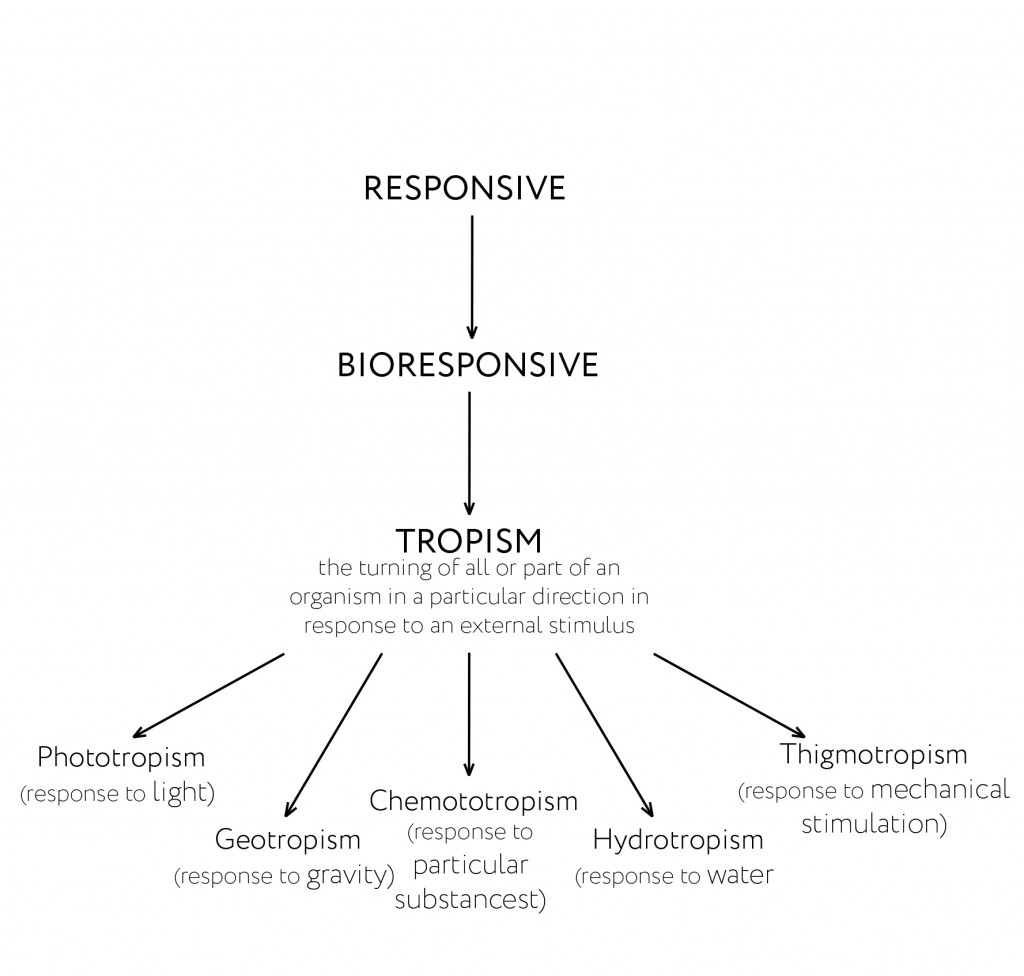
Plants bulbs and tubers are the typical examples of bio-responsive energy storage
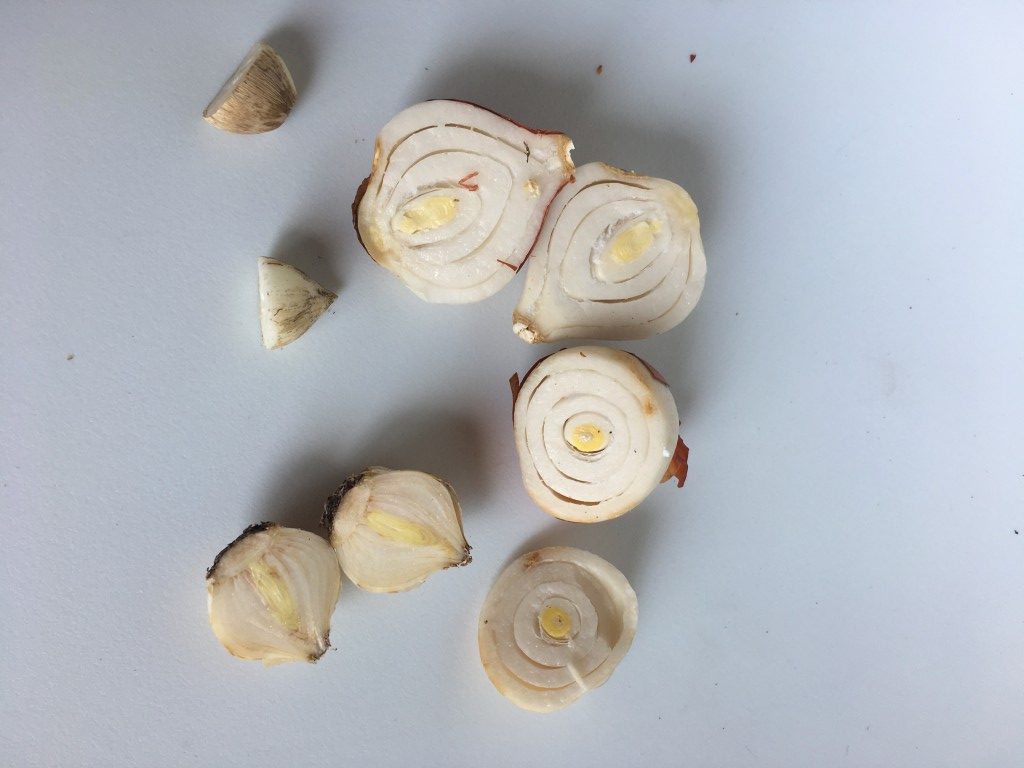
Fleshy Scale Leaves
Modified leaves hold the storage food.
The breakdown of polymeric carbohydrates to form shorter-chain sugars, especially sucrose in roots and tubers is a common feature of storage organs during cold conditions.
The major reserve carbohydrates are starch and fructosans.
In typical storage tissue, after a build-up of reserve carbohydrate prior to dormancy, low temperature (or certain other treatments) leads to an accelerated and progressive breakdown of polymers to yield oligomers and monomers providing translocatable substrates to sustain growth of shoots, and perhaps also to enhance the ability of the organ to withstand freezing or desiccation
To Break Dormancy
Low-temperature treatment can be replaced, at least partially, by chemical compounds such as gibberellic acid, thiourea or certain anesthetics, or physical means such as anaerobiosis affected the properties of the mitochondria of the scales.
The most extreme dormancy stage is characteristic for the spikemoss Selaginella Lepidophylla.

8 hours time lapse in water
ARCHITECTURAL APPLICATION
Geometry is generated as an extension of a plant to produce a holding plant set which could be an alternative interpretation of green walls. Shape search is based on fiddlehead curling mechanism and engraved paths for collecting rainwater and transporting it directly to the plant.
20 hours time-lapse video introduces the first working prototype of water collection
GEOMETRY DEVELOPMENT
This curling and uncurling system could be not only an alternative to decorative facades but also developed
to water supply system reactive to climatic changes.
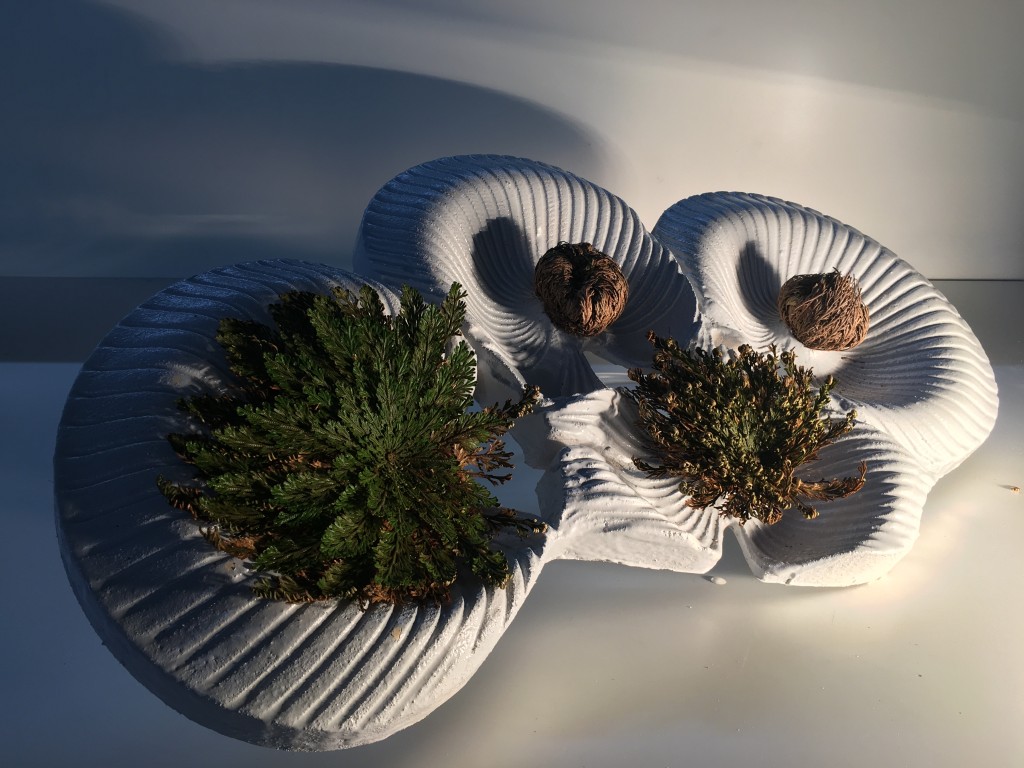
This going back and over situation has a future as an irrigation system to host the plant in the building facade.
The Scheme of Workflow
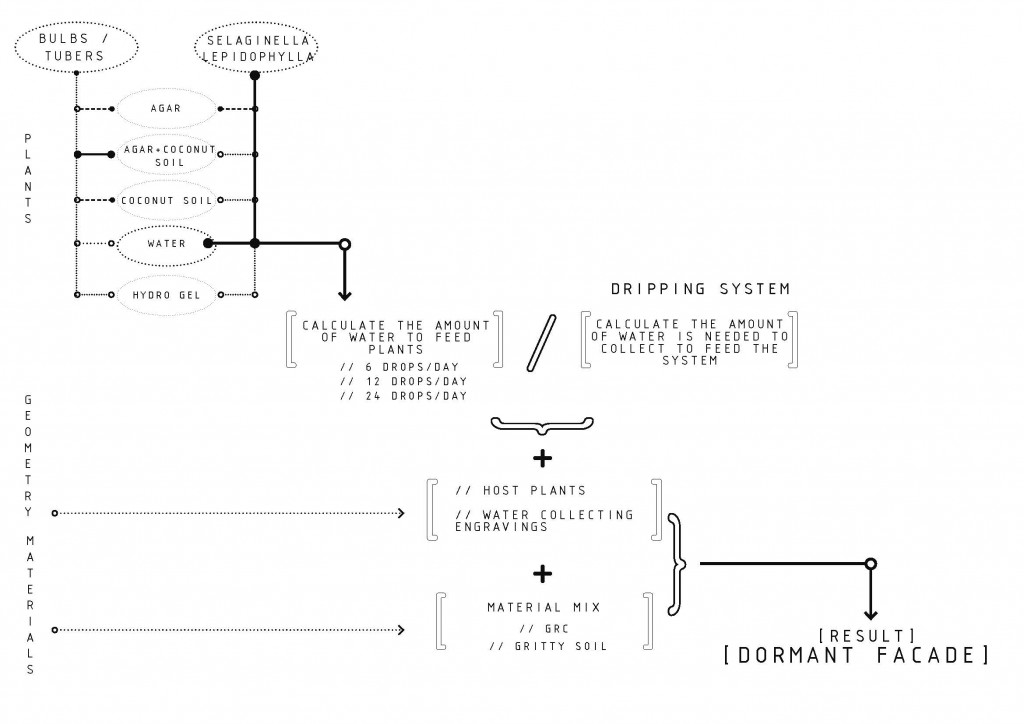
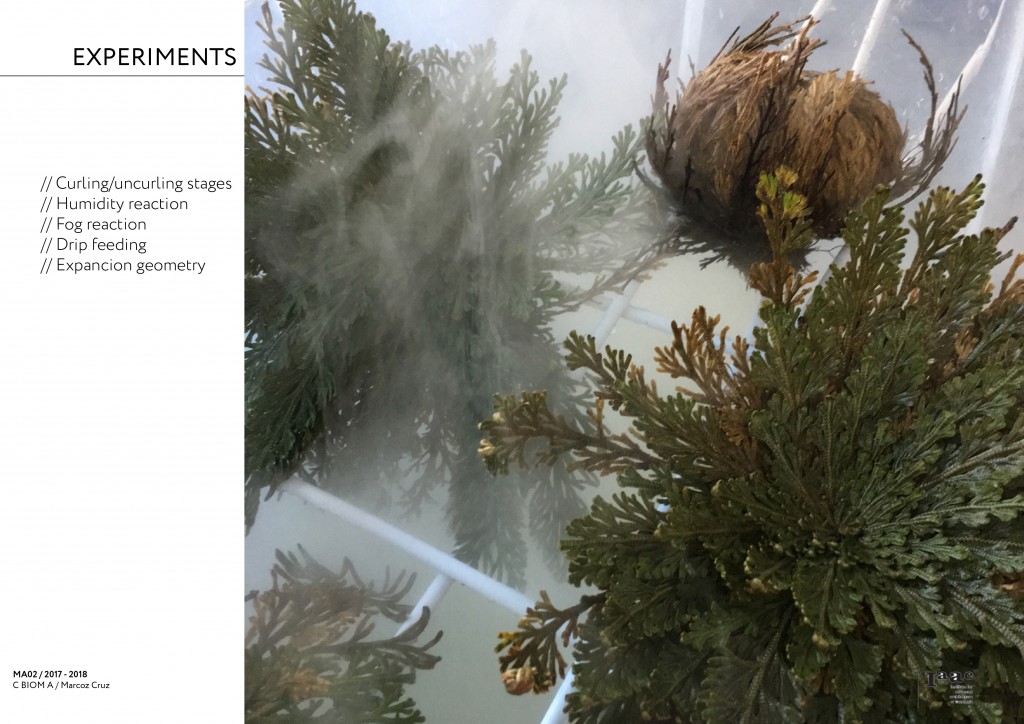
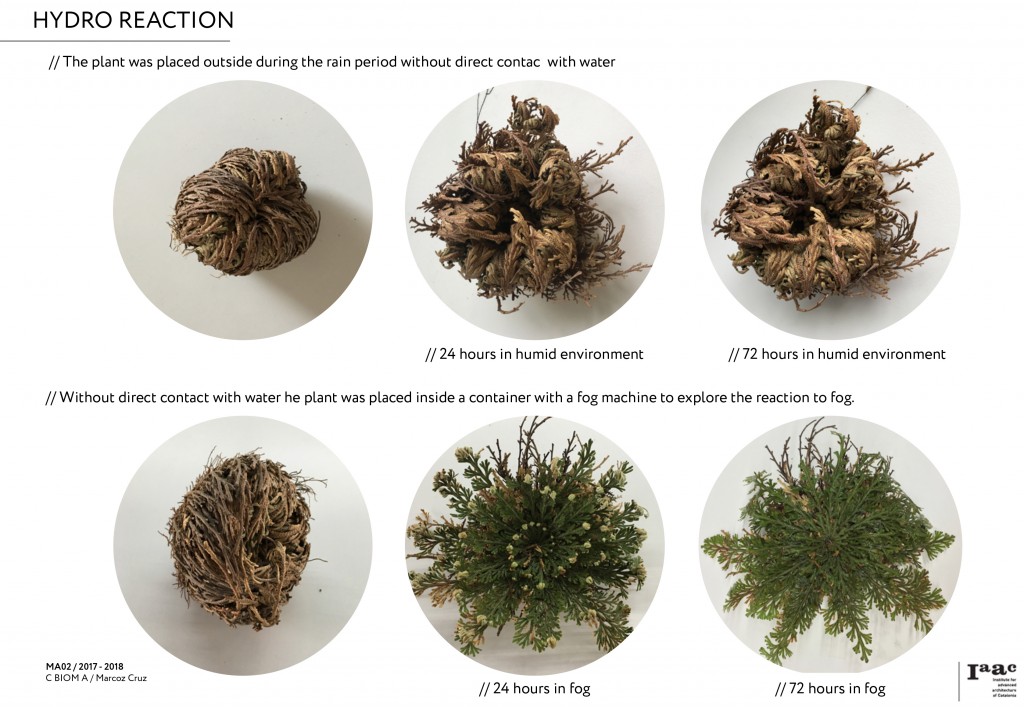
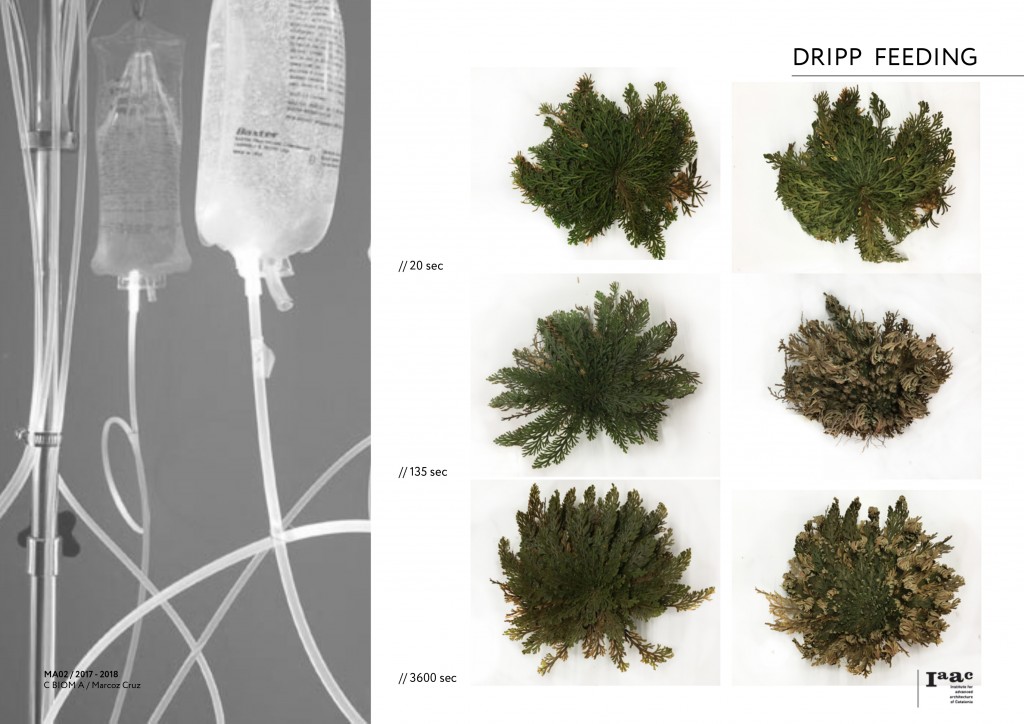
Knowledge of natural behaviors and algorithms is driving the future model of responsive architectural systems. Systems which are created by imitation of intelligence of natural behavior, are the emergent requirements in architecture today. The urban world is inextricably linked with the natural as if the biomimicry of architectural structures or the literal introduction of bio originalism which is so-called «green wall». This project is about rethinking the questionably effective method of artificial creation of a vertical environment for plants to live.
The aim of the thesis project is to design a dormant facade system to replace existed inefficient green walls which actually lives.
GEOMETRY
The Scheme of Computation
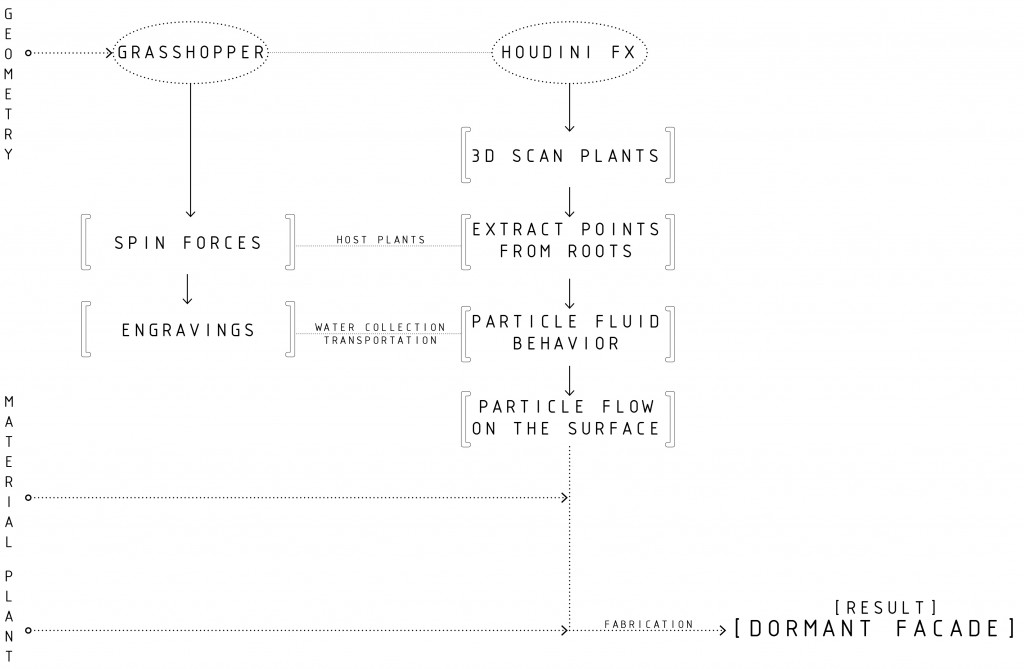
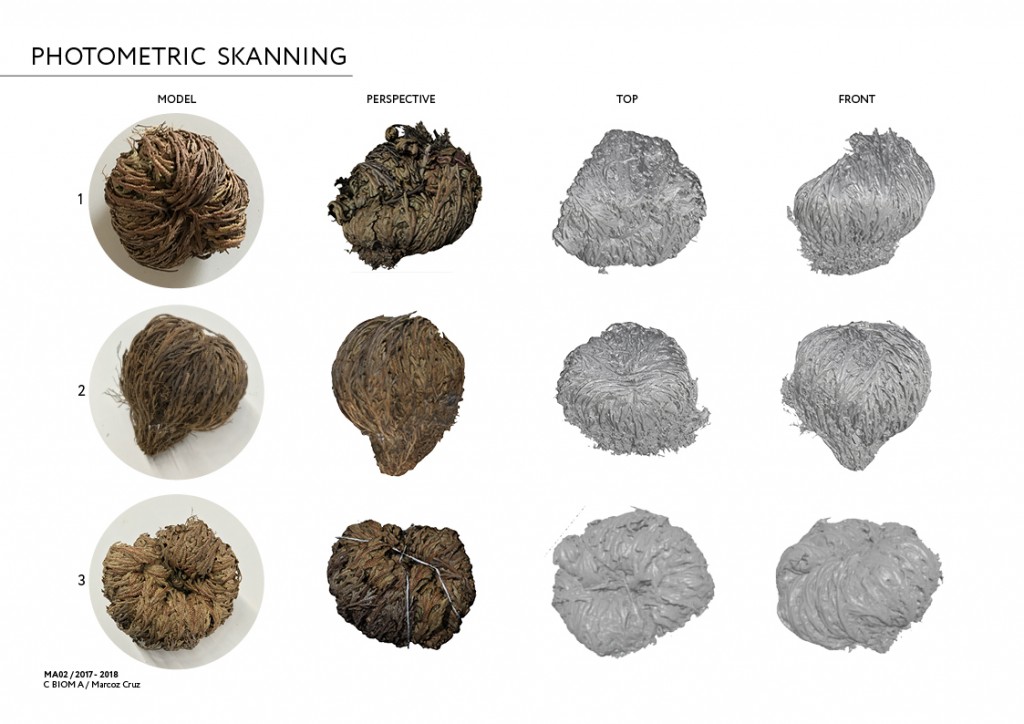
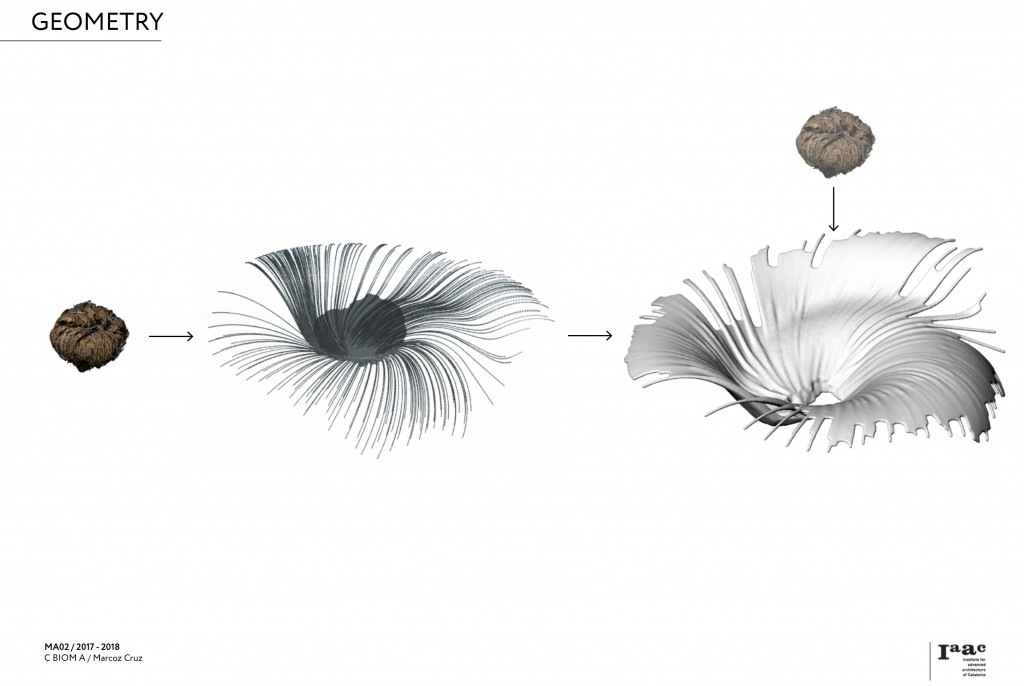
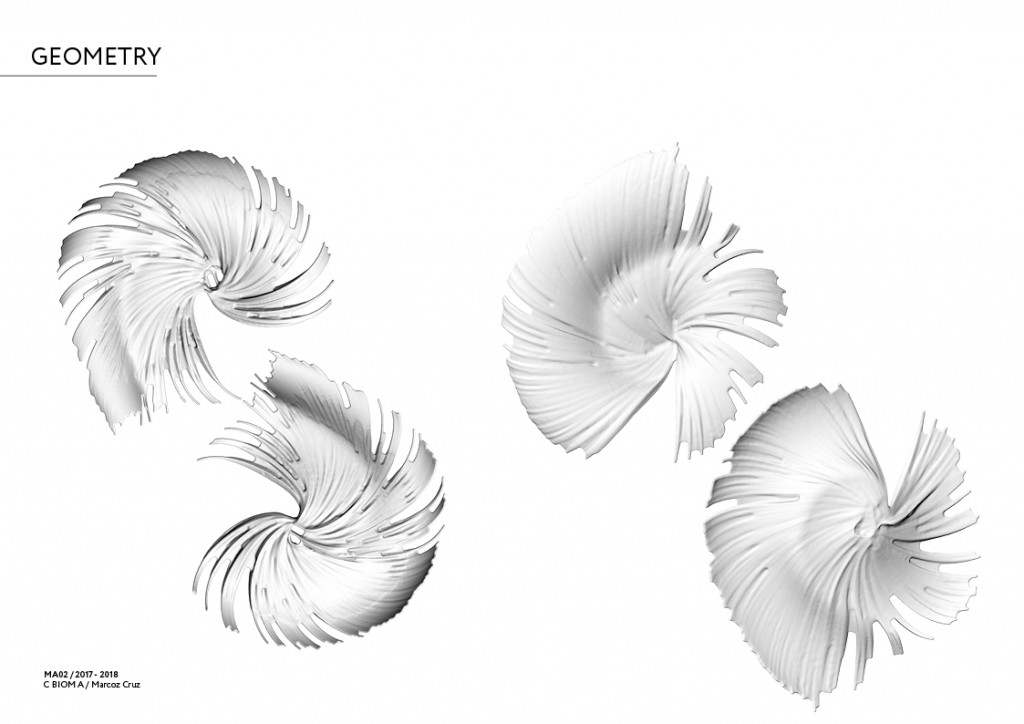
PANELS MORPHOLOGY

THE SYSTEM
THE SYSTEM IS DESIGNED IN SUCH A WAY THAT THE COLLECTION AND TRANSPORTATION OF RAIN WATER TO THE PLANT IS DUE TI THE UPPER REMOVABLE PANEL AND LOWER BASE DIRECTLY TO THE SOIL HOLLOW. THUS, NO MATTER WHERE THE WATEL ENTERS, IT IS ALWAYS TRANSPORTED DIRECTLY TO THE PLANT.
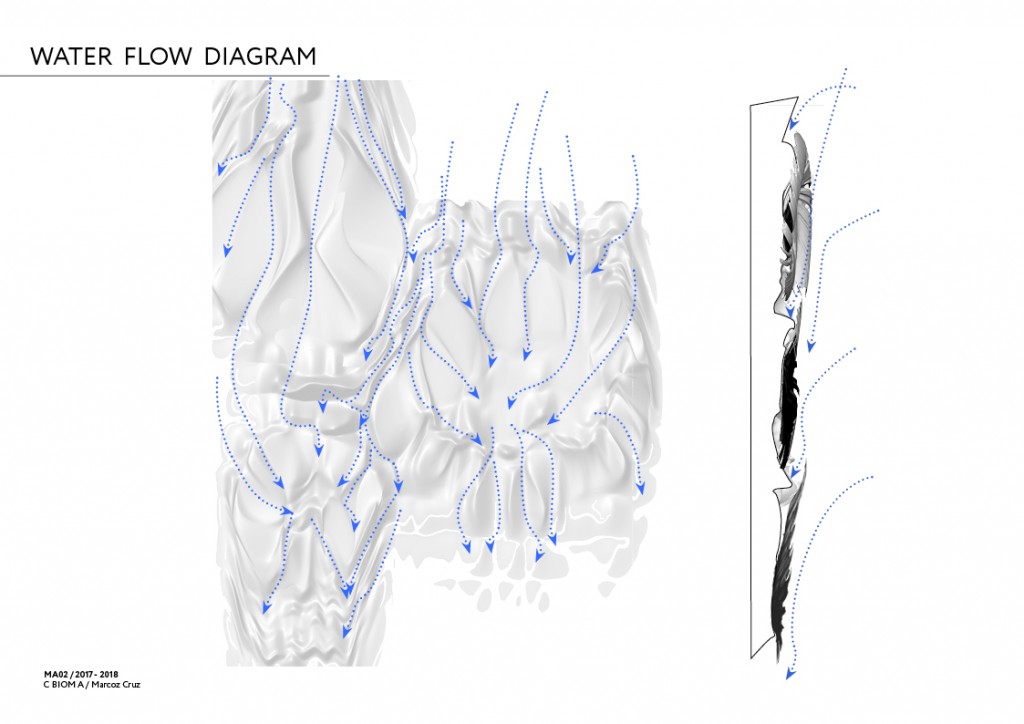
ARCHITECTURAL PROPOSAL
3 types of panels layout
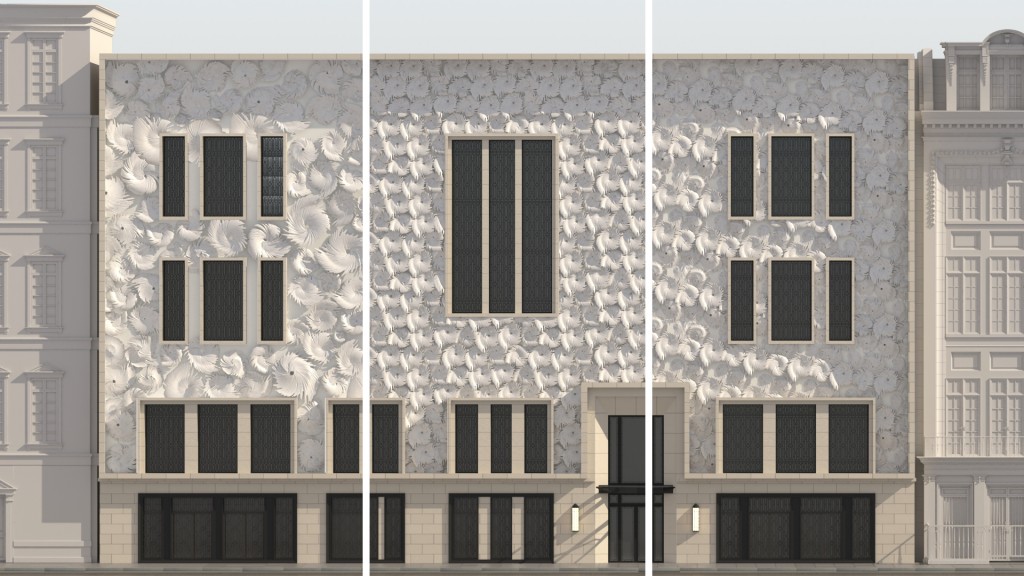
?hanges in water ow depending on the panels position
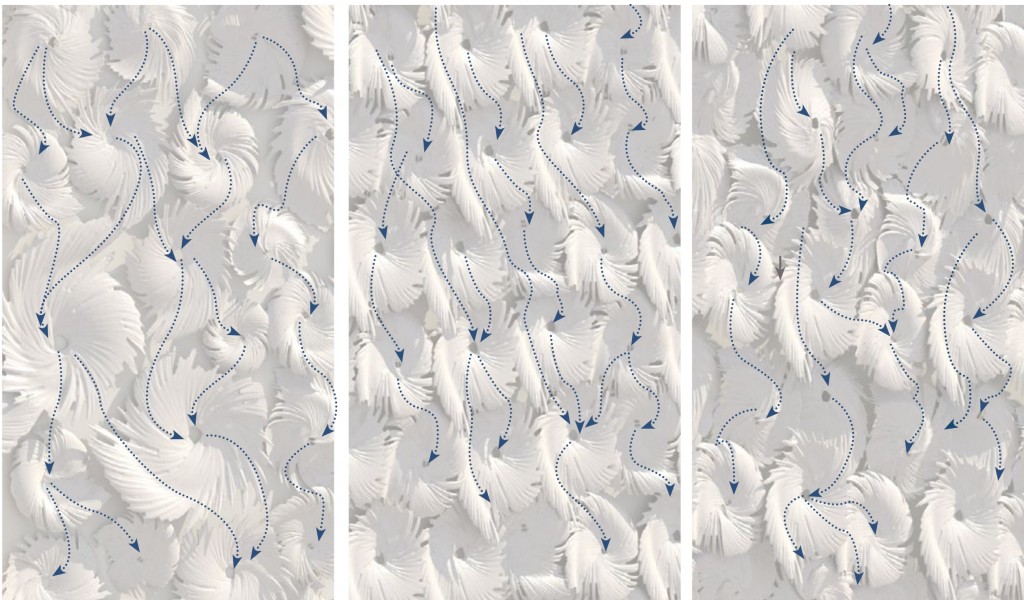
MATERIAL STUDY
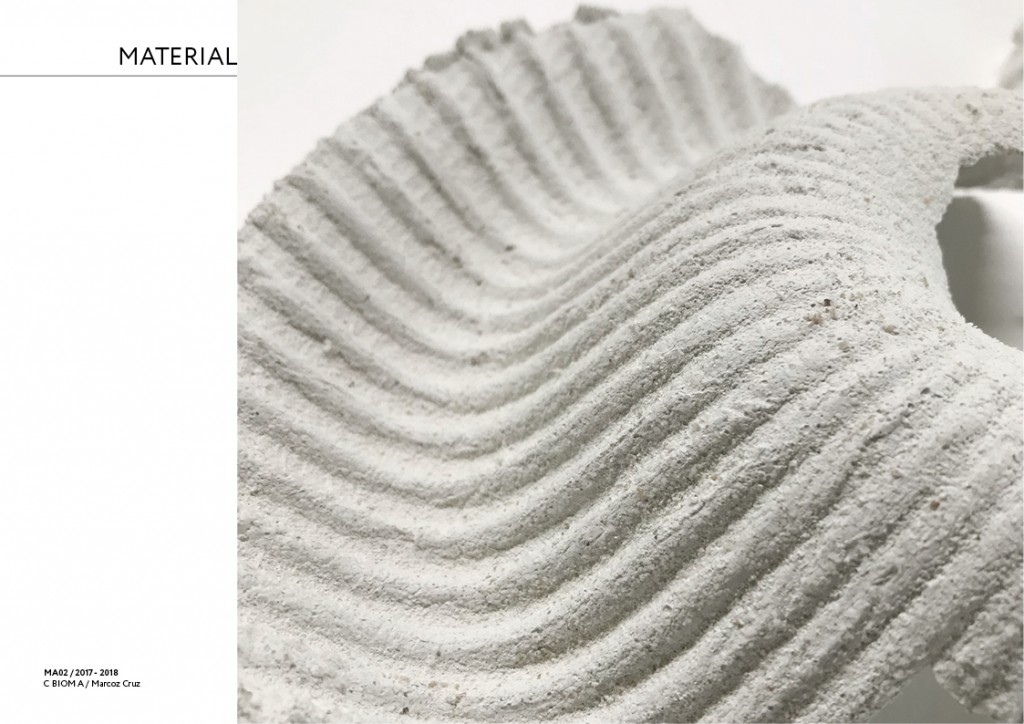
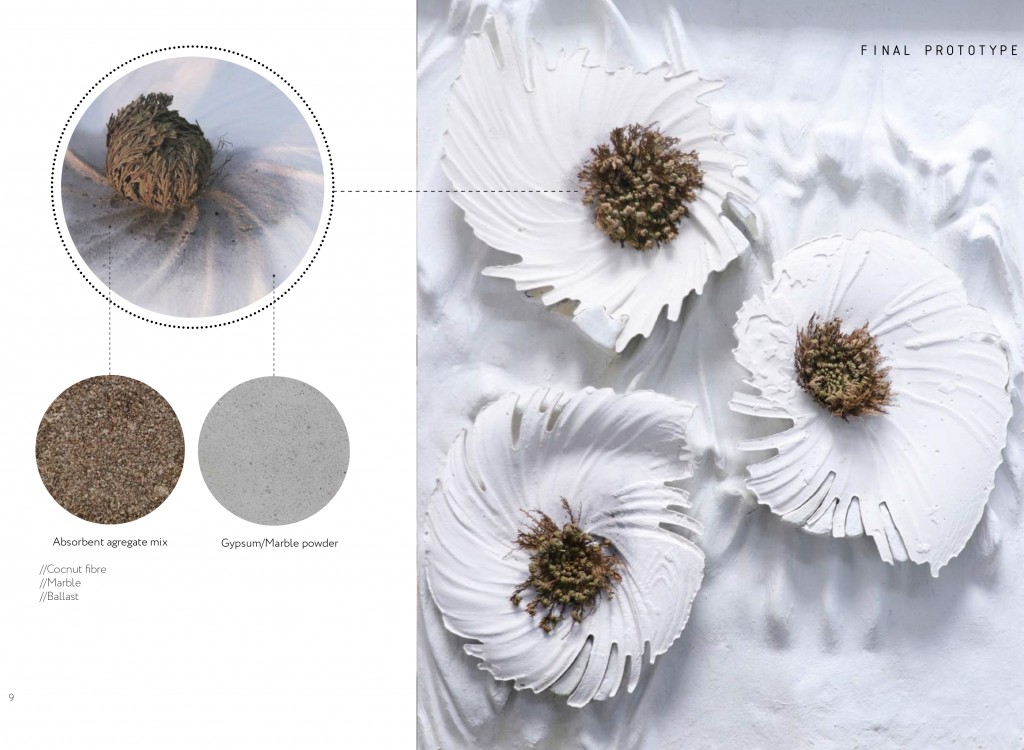
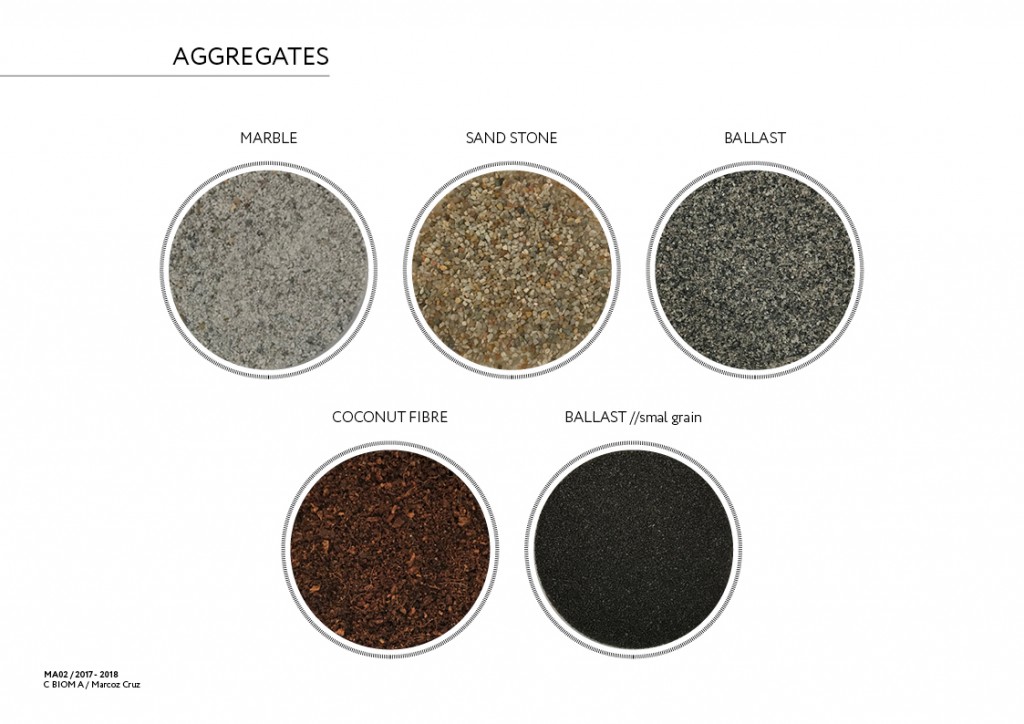
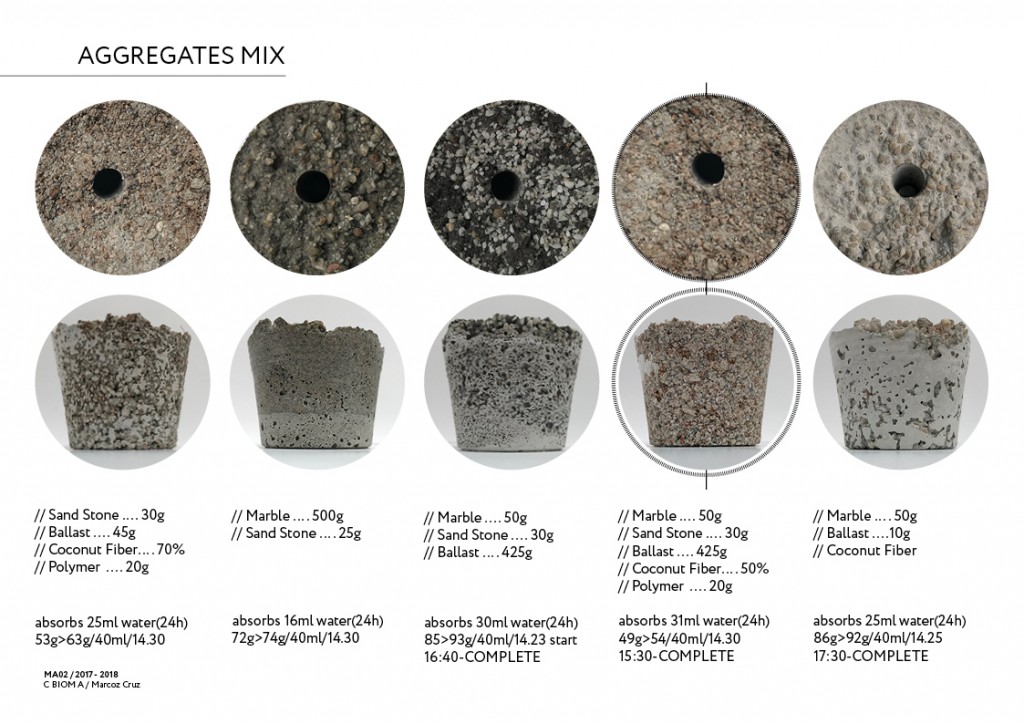
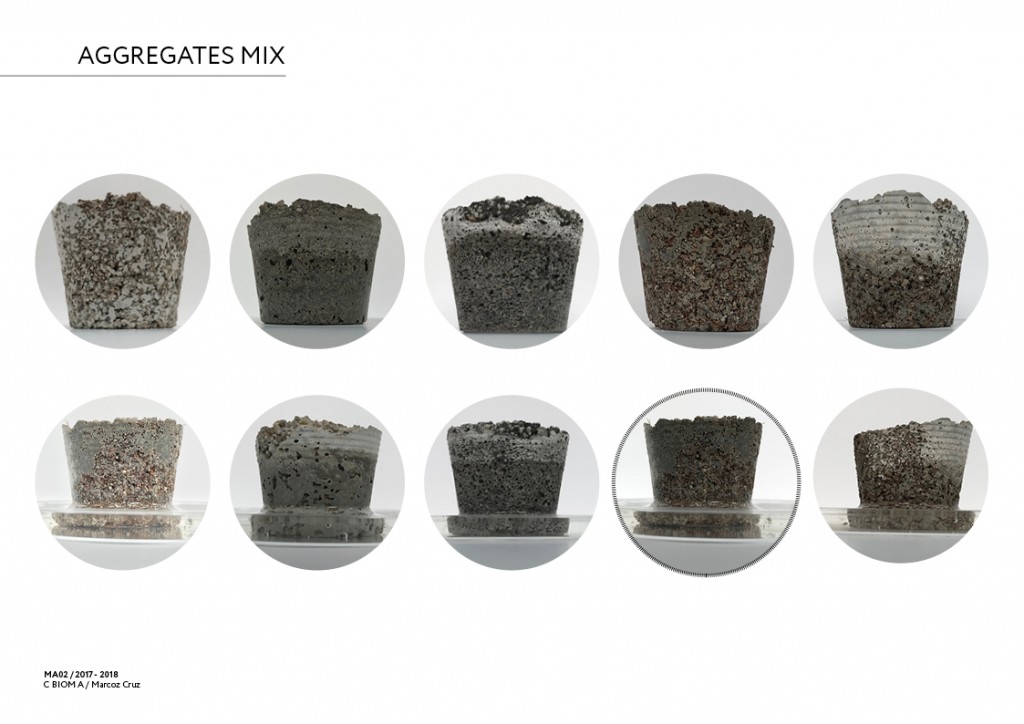
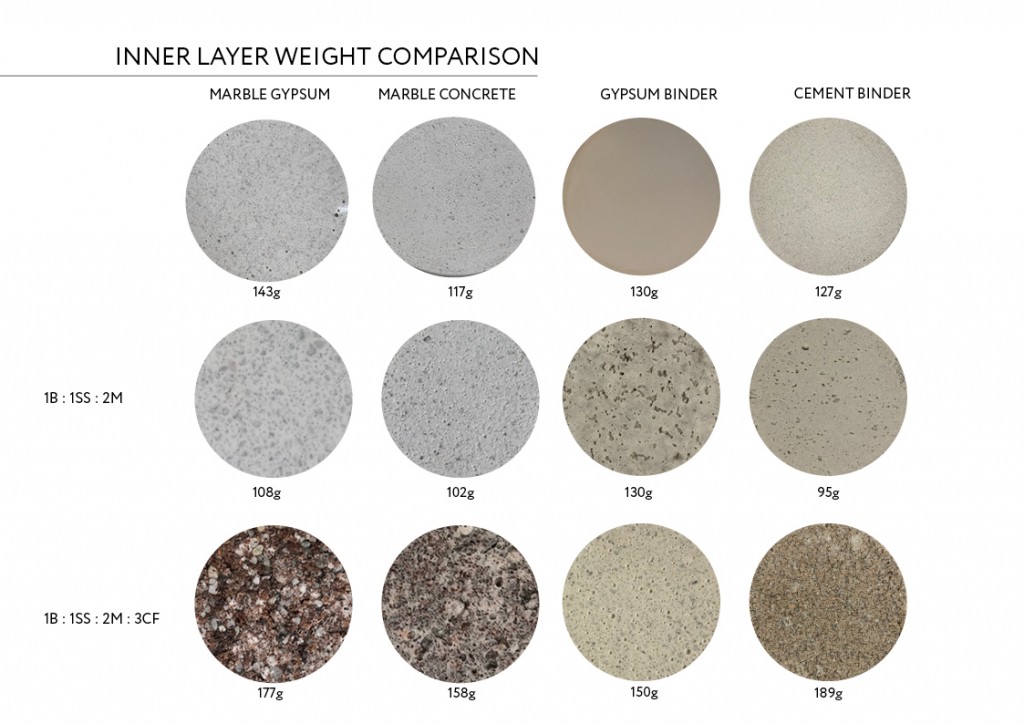
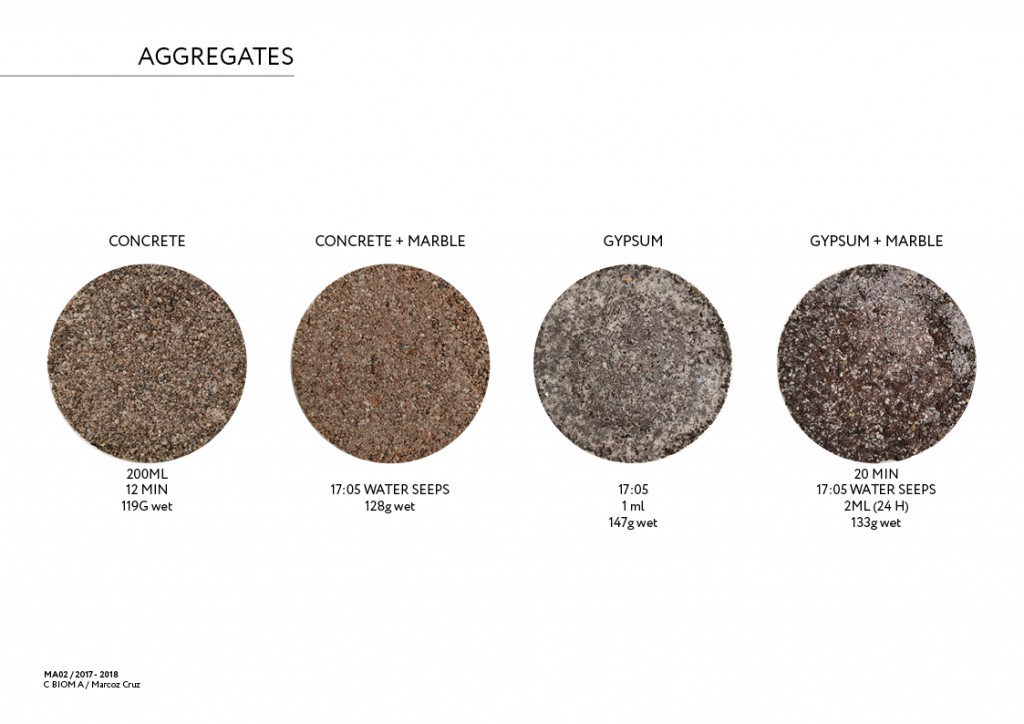
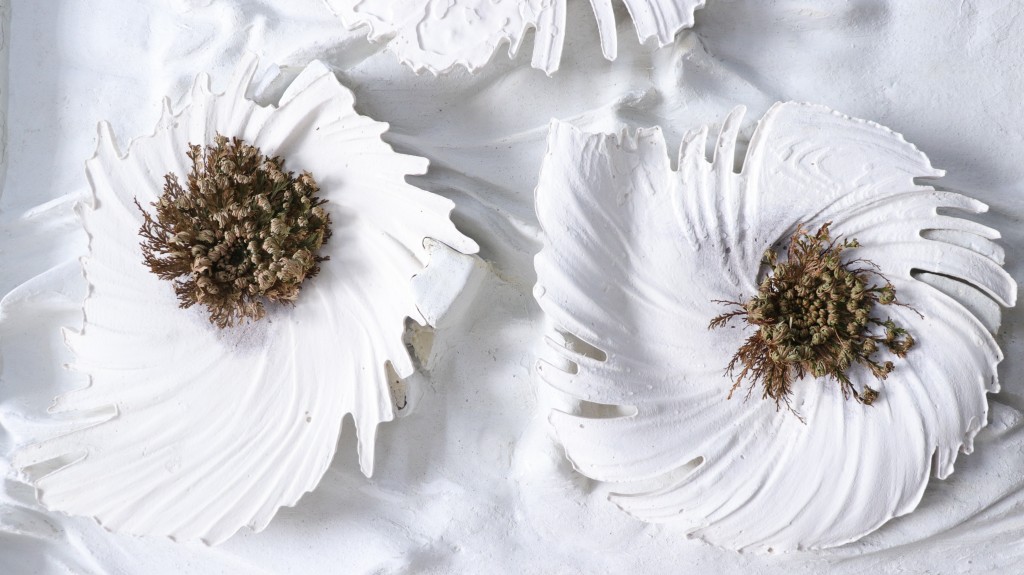
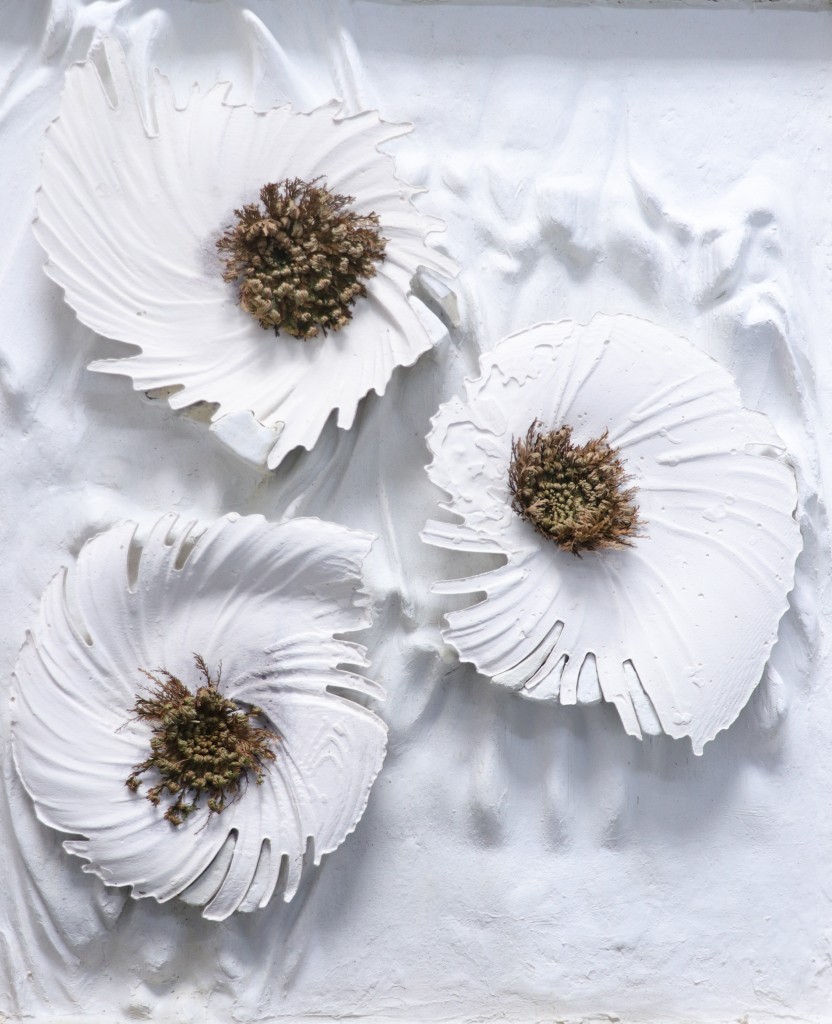
By: Evelina Ilina
Advisor: Marcos Cruz
